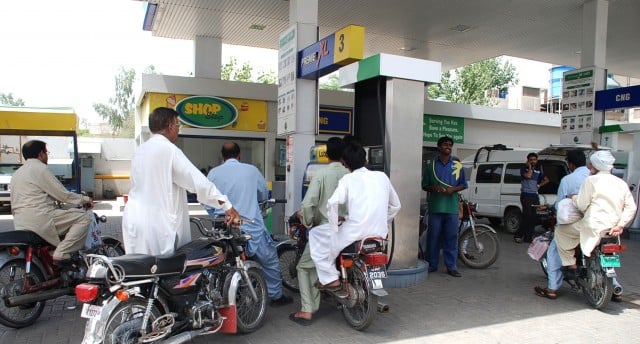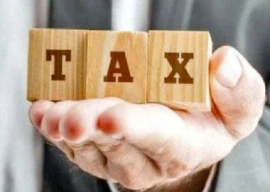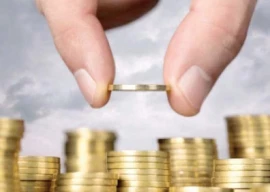
The recent hike in the prices of motor gasoline, more commonly known as petrol, is being widely criticised. The following paragraphs are an attempt at looking for measures which might help in reducing our dependence upon petrol.
Historical perspective and current status
Historically, Pakistan’s petrol consumption witnessed a 15 fold increase as it rose from 12,500 barrels per day (bpd) in 1980 to 195,000 bpd in 2021. The number seems quite high even when compared to the population growth during the period. The anomaly accentuates further when we realise that Pakistan’s annual per capita consumption of motor gasoline for 2020 amounted to be 0.309 barrels (bbl) against China’s 0.7927 bbl, Turkey’s 0.2236 bbl, India’s 0.1708 bbl and Bangladesh’s 0.011 bbl.
The consumption used to hover around 20,000 bpd till 2006 after which it jumped to 36,000 bpd in 2008. From this point onward, it experienced massive leaps and surged from 65,000 bpd in 2010 to 195,000 bpd in 2021. On the other hand, China observed an increment of only 50% in consumption during the period, while its GDP soared up from $6 trillion to $15 trillion. Thus the abnormal increase in Pakistan’s case did not really come from economic development and it needs detailed analysis.
Comparative analysis
Sustainable economic development cannot take place without a robust and agile system of logistics and mobility of masses. In the modern industrial era, this translates to a well-honed arrangement consisting of railways, roads and public and private transport with all the segments complementing each other. Pakistan inherited a highly developed railway system catering to more than 90% of the passenger and 100% of the freight requirements however it now caters to only 4% of the requirements of both the segments. Talking about the causes behind this decline, we find high level of professionalisation of every relevant forums in all success stories. China Railway chairman had started his career from the lowest rungs in the railway system as track maintenance worker in 1970s. Out of the remaining eight board members, six are hardcore railway professionals. Resultantly, the country is able to successfully manage a 20 times larger system.
With the given professionalisation, China has achieved a wonderful haulage mix of 15% of its domestic freight through railway, 53% through transportation via inland waterways and the rest through roads.
Juxtaposing Pakistan Railway with the Chinese example immediately highlights the major cause behind its collapse. Its board comprises of 10 members with seven ministry officials and three private members; two of whom are also retired government servants. Thus the most critical forum lacks the required capacity in terms of professional knowledge and experience.
It is pertinent to mention that Pakistan Railways used to have a professional board until it was merged with the ministry in 1989 and Railways secretary assumed charge as chairman. From this point onward, professionals lost their primacy on the board. According to the records, the institution had always remained in profit till then.
Post 2007-08
As mentioned above, in our case, the consumption of petrol suddenly takes a vertical trajectory around 2007-08, which continues till today. Among other factors, the rapid rise also reflects a new downward leap in the performance of Pakistan Railways. It was catering to 10% of the inland national traffic in 2007 which now stands at a meager 4%. The passenger traffic started dwindling since 2008 and fell by 40% till 2014. The freight segment virtually remained suspended from 2010 till 2014. The decline caused increase in traffic on the roads.
Another major contributing factor is the decline in the use of bicycles. Our annual cycle manufacturing has dropped to one-third of what it was in 2001 ie 600,000 cycles. India and Bangladesh manufacture more than 20 million and 2 million cycles on an annual basis respectively with Bangladesh exporting 1.2 million units to 24 countries.
Cycling is playing a key role in managing the energy mix of many countries. In Denmark, 16% of all trips are made on bike with 50% school students using them for commuting to educational institutions. Moreover, India is the third largest user of cycles while consumption of Bangladesh is also four times higher than Pakistan.
The aforementioned analysis would be incomplete without taking into account our abject failure to establish a credible public transport system. Historically, while we continued to allocate funds for road infrastructure, public transport and railways generally remained pariahs. By early 2000s, all attempts towards a viable transport system of state owned buses had failed. Even most of the pertaining institutional infrastructure had also disappeared. Similarly, with a few exceptions, large private contractors avoided to shoulder the burden. Thus, poorly maintained private buses, shabby vans and Suzuki pickups cramped with passengers, soon became a routine of our urban scenery.
A major off-shoot of the above situation proved to be the inundation of the roads with two and three wheelers. The number of motorcycles rose from 2.7 million in 2006 to 12.4 million in 2015 and touched 17.5 million in 2018. Similarly, there was an increment in the registration of three wheelers by three times from 136,394 in 2006 to 544,792 in 2015. Undoubtedly, it did give major impetus to the motorcycle industry in Pakistan ie while the production was 327,446 units in 2004, it crossed 2.8 million in 2018. This rapid increase, generally presented as a sign of affluence, has resulted in additional import bill of billions of dollars and undue traffic load on the roads. Another major causality is, of course, the atmosphere. The 2020 World Air Quality Report ranked Pakistan as the second worst country after Bangladesh in terms of air quality with fossil fuel emissions as a major cause. Thus this ‘success’ is rather a symptom of a serious affliction ie failure of governance.
What can be done?
I believe that the following measures can help in addressing the issue. First of all, integration of all transport functions under one ministry is needed. Moreover, revamping of the governance structure of the sector in the light of available international precepts is required. A tier of professionals at the top steering the entire sector is essential. In addition, there is a need for revival of the pre-1989 governance structure for Pakistan Railways, facilitation of the production, usage and export of bicycles with aggressive targets.
The government should start looking for export markets of two and three wheelers. It should also start diverting maximum possible funds to Pakistan Railways and look for options other than the China-Pakistan Economic Corridor (CPEC) for realising Mainline-1. Mobilisation of an investment of $6-7 billion supported by viable business models may not prove to be as difficult as it seems. China can also be one of the partners.
The above steps would not only reduce petrol consumption by at least half, thus enabling us to save $3 billion per year, but also help in reducing air pollution. In addition, they would, of course, unleash an unparalleled era of economic independence and development for the country.
The writer is a petroleum engineer and an oil and gas management professional
Published in The Express Tribune, October 18th, 2021.
Like Business on Facebook, follow @TribuneBiz on Twitter to stay informed and join in the conversation.





1725967717-0/Untitled-design-(3)1725967717-0-165x106.webp)












COMMENTS (2)
Comments are moderated and generally will be posted if they are on-topic and not abusive.
For more information, please see our Comments FAQ